|
ve
|
Photos and seismic observation by Etele Pechy
| ||||||||||||||||||||||||||||||||||||||||||||||||||
|---|---|---|---|---|---|---|---|---|---|---|---|---|---|---|---|---|---|---|---|---|---|---|---|---|---|---|---|---|---|---|---|---|---|---|---|---|---|---|---|---|---|---|---|---|---|---|---|---|---|---|---|
|
We cannot, as of now, dispose of data enough to completely comprehend the complexity of chemical, physical and social inferences of the ship traffic in the urban pattern of Venice. By our observations, we anyway dispose of enough evidences to locate some factors, and over all to point out the tragic menace for our Historical Centre. | ||
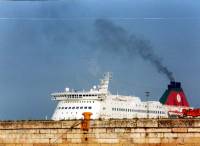 |
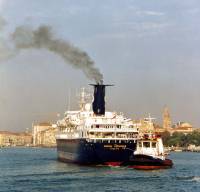 |
Ship fumes release amounts of sulphuric and nitric pollutants, enough to shortly crumble all of the stones of the town in chalky mud.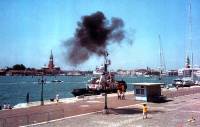 |
Pollution by sulphur and nitratesThis aspect is clearly the most lethal menace for the whole Venetian Building. Nitric and sulphuric anhydrides are released in enormous quantity from the funnels that, unlike the exhaust pipes of land vehicles, are legally lacking in any system to filter the fumes. Those particular fumes from the ships come from engines burning heavy oil (bunker fuel). The Venice Public Health Committee has collected and published a large amount of evidences about this argument, on the site http://www.ourvenice.org. The crumbling of stones by sulphation is also illustrated in other articles of Venice ObServer like the one you are reading now. |
||
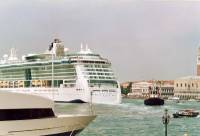 |
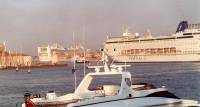 |
The terrific frequence and entity of ship traffic in St. Mark's Basin and in the Canale de la Giudeca. |
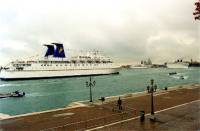 |
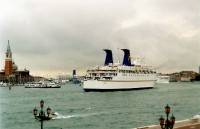 |
 |
Wave motionThe impact of the enormous water masses displaced by the run and the manoeuvres of the big ships hits Venice substantially in four ways:
|
||
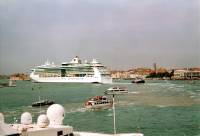 |
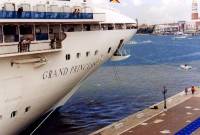 |
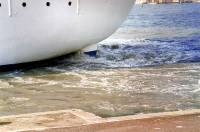 |
| The turbulences move away the ground base of every building. | ||
|---|---|---|
It is very important to comprehend that the ships are not, the Venice enemy; on the contrary, this City has always been a naval one. Repubblica Marinara, one of the four Italian. The ships grew more and more modern and big, but the local ruling class, too much engaged in internal power struggles and party greed, has not been able to update the sea vocation of the city in pair with the times and the development of the international fleet. Notwithstanding the fact that many of the greatest cruise ships are still assembled in the Venetian shipyards, as happens since more than one thousand years. |
||
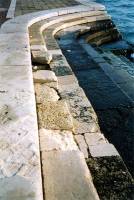 |
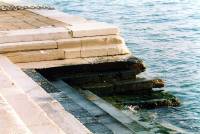 |
Serious damages at the embankements caused by visible waves impacts.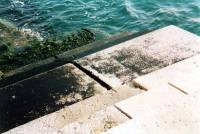 |
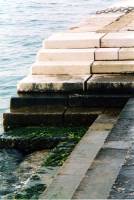 |
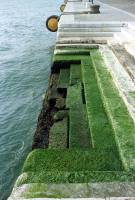 |
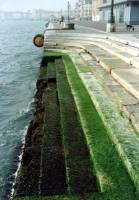 |
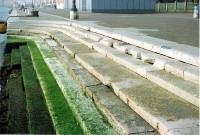 |
Aside on the right, the impacts of the "mute wave" recorded as miniseisms by the marigraph located at the base of St. Mark┤s Bell Tower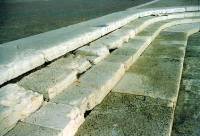 |
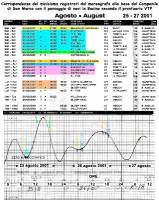 |
| Sign the Petition for the Public Health Committee in Venice |
|---|